Enhancing Soft Skills for DevOps Engineers: Essential Non-Technical Skills to Thrive
Consulting and Client Management
Internal versus External Clients
Effective stakeholder management is critical for any DevOps-driven organization. This guide breaks down the differences between internal and external clients, offers strategies to balance their needs, and provides best practices to maintain system health, foster communication, and drive continuous improvement.
1. Defining Internal and External Clients
- Internal Clients
Team members, leadership, other departments, and business units within your organization. - External Clients
Outside organizations or individuals consuming your products or services.
Both groups are essential: internal clients ensure smooth processes and alignment with company objectives, while external clients drive revenue, brand reputation, and referrals.
!!! note "Client Priorities" Internal teams often focus on process alignment, meaningful work, career growth, and hitting roadmap milestones. External customers seek features, performance, compliance, security, and reliability.
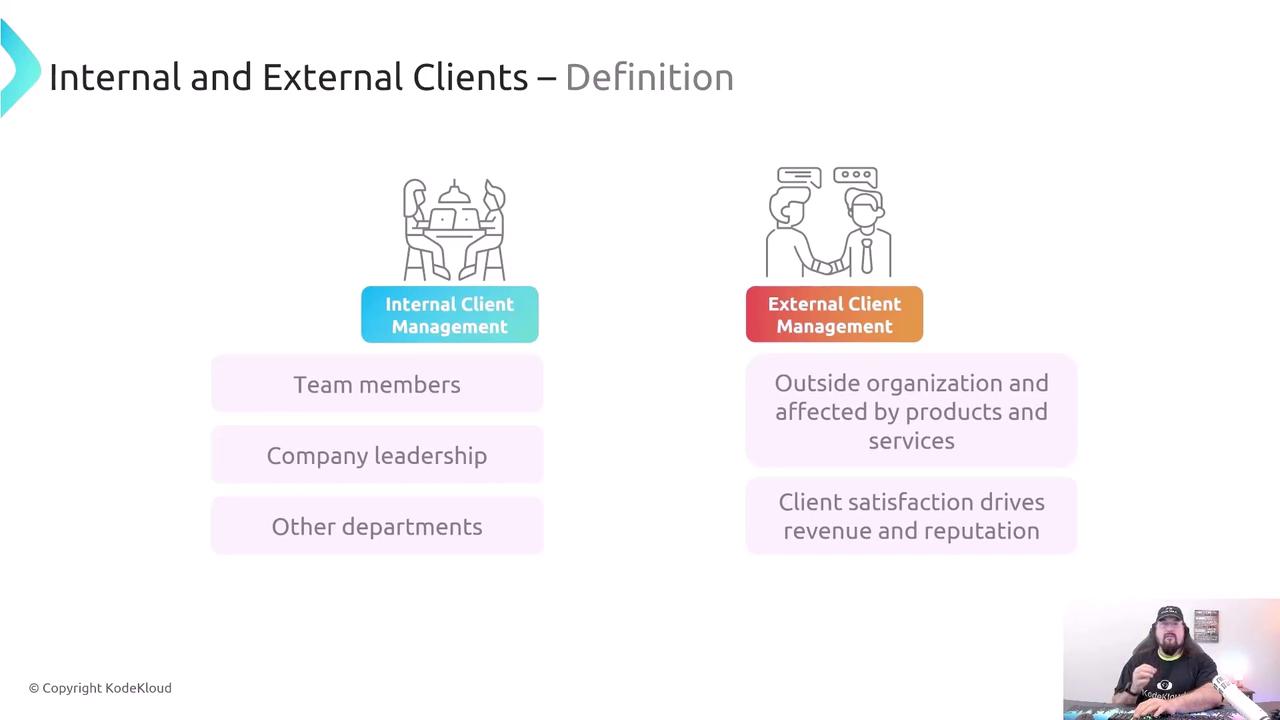
2. Balancing Divergent Focuses
- Internal Focus: Process improvements, team development, technical debt reduction, roadmap delivery.
- External Focus: New product features, SLAs, compliance standards, security audits, uptime guarantees.
Neglecting internal upkeep can slow external feature delivery over time. Visualize this trade-off as a balance scale:
![]()
3. Prioritizing Requirements: Must-Haves vs Good-to-Haves
Categorize every client request into Must-Haves and Good-to-Haves:
| Category | Description | Examples |
|---|---|---|
| Must-Haves | Critical functionalities or compliance and performance objectives. | Regulatory compliance, core API endpoints, security fixes. |
| Good-to-Haves | Enhancements that improve UX, add convenience, or refine visuals. | UI animations, custom themes, extra reporting graphs. |
!!! note "Why Prioritization Matters" Delivering external must-haves first maintains customer trust—but schedule internal improvements to prevent growing technical debt.
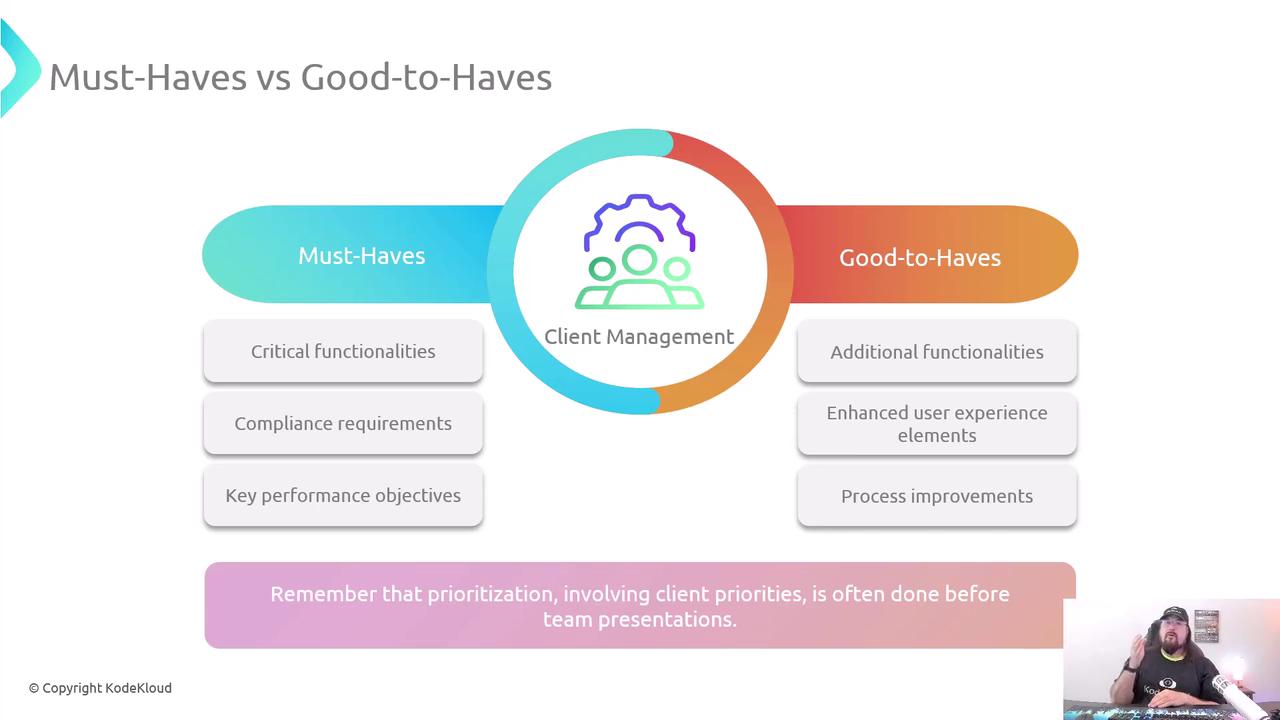
4. Managing Technical Debt and System Maintenance
Ongoing upkeep is non-negotiable. Common tasks include:
- OS patching, hardware refreshes
- Dependency updates (libraries, containers, orchestration tools)
- Refactoring legacy code and cleaning up configurations
Without regular investment, system reliability degrades and feature velocity stalls.
5. Communication Best Practices
Consistent, transparent communication builds trust with both internal and external stakeholders:
- Regular Updates
Share status at predictable intervals (e.g., quarterly roadmaps rather than vague timelines). - Clarity & Conciseness
Apply the Seven C’s: clear, concise, concrete, correct, coherent, complete, courteous. - Active Listening
Acknowledge feedback and thank clients for input—positive or negative. - Feedback Channels
Use surveys, forums, anonymous suggestion boxes, email threads, or Discord servers.
!!! note "Effective Communication" Scheduled updates, precise messaging, active listening, and diverse feedback channels are key to stakeholder satisfaction.
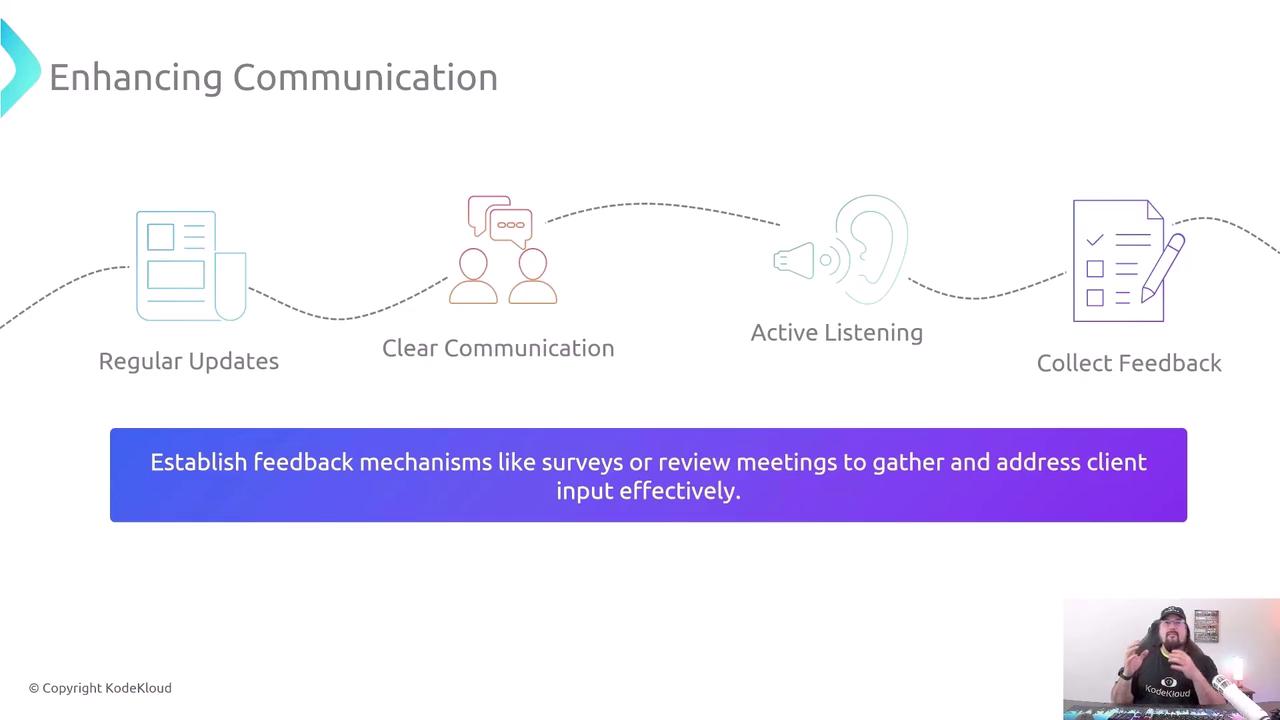
6. Aligning Vision, Mission, and Goals
Every team member should connect daily work to the company’s higher purpose:
- Vision: Long-term aspirations for the company and product.
- Mission: How the organization achieves its vision.
- Goals & Strategy: Measurable objectives at team, department, and company levels.
Review these regularly to keep all stakeholders moving in a unified direction.
!!! note "Strategic Alignment" Tie vision and mission to quarterly goals so each team understands its contribution to the big picture.
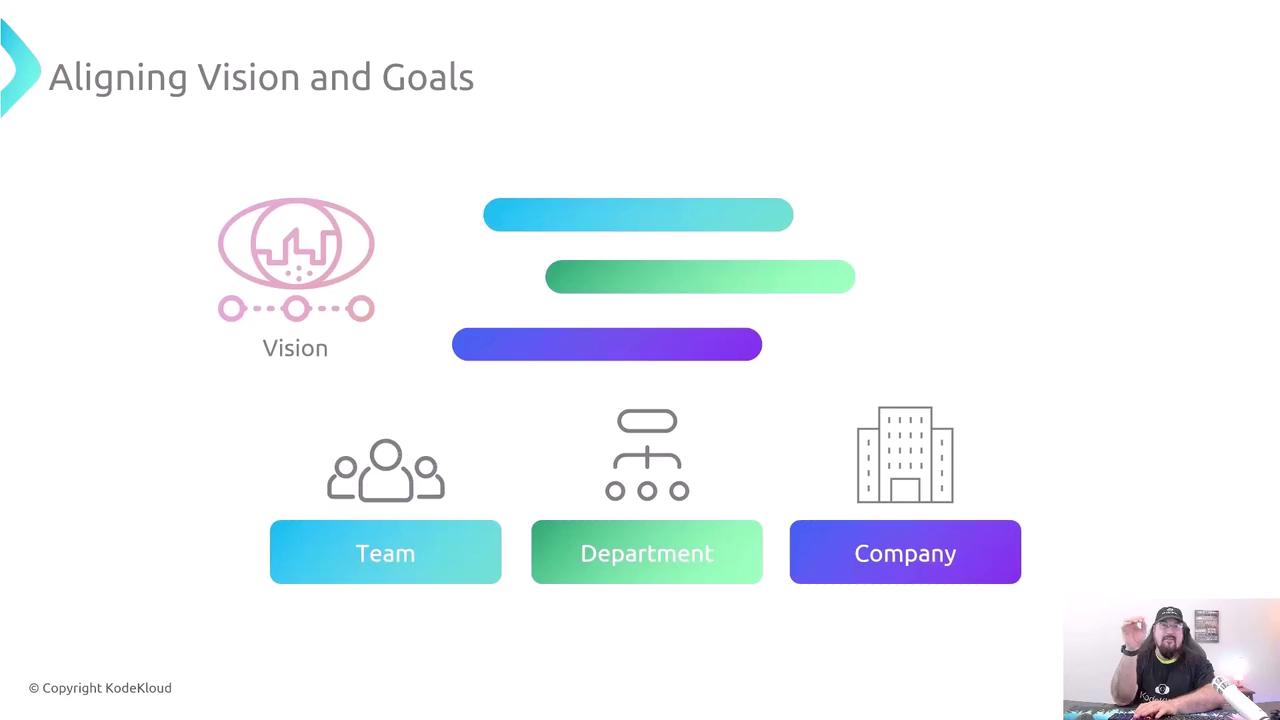
7. Continuous Improvement: Delight Your Customers
Anticipate client needs and deliver surprises that add value:
- Ideation: Brainstorm innovations aligned to client pain points.
- Pilot: Roll out new features to a small user group and gather feedback.
- Scale: Expand successful experiments across all users.
This loop embodies DevOps principles of flow, feedback, and experimentation.
!!! note "DevOps Feedback Loop" Idea → Implement → Test → Refine for ongoing product and process enhancements.
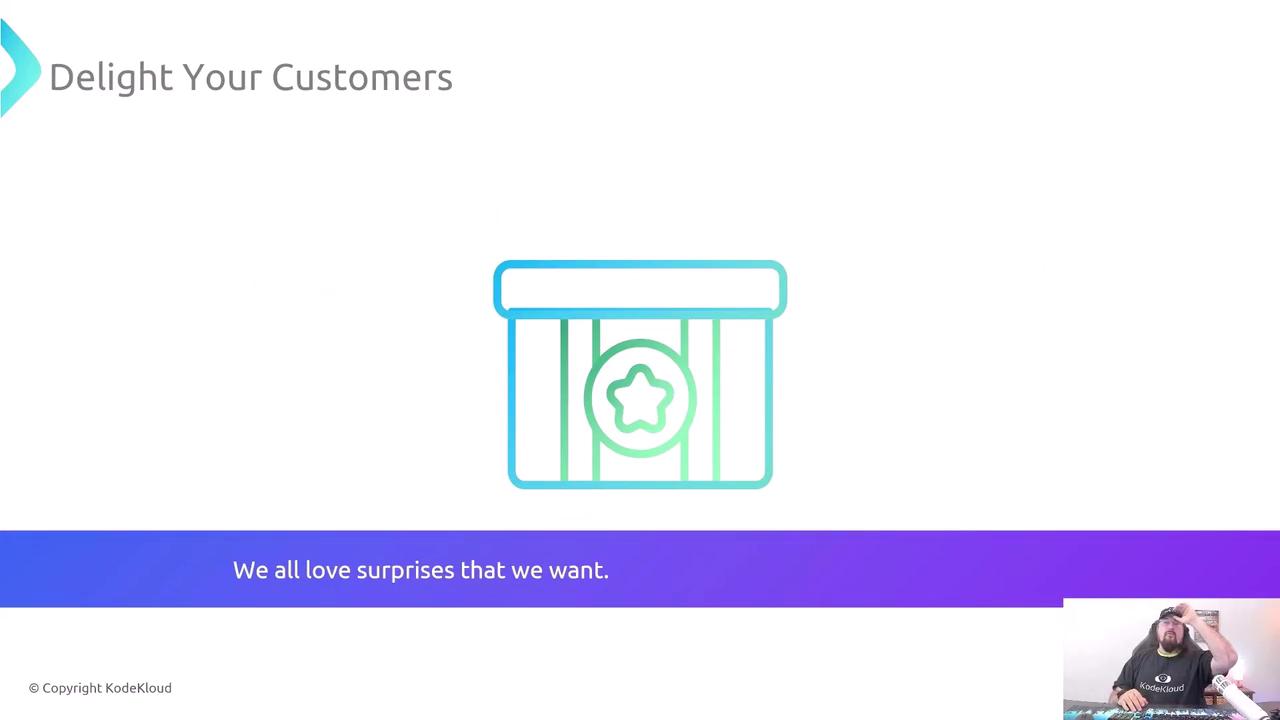
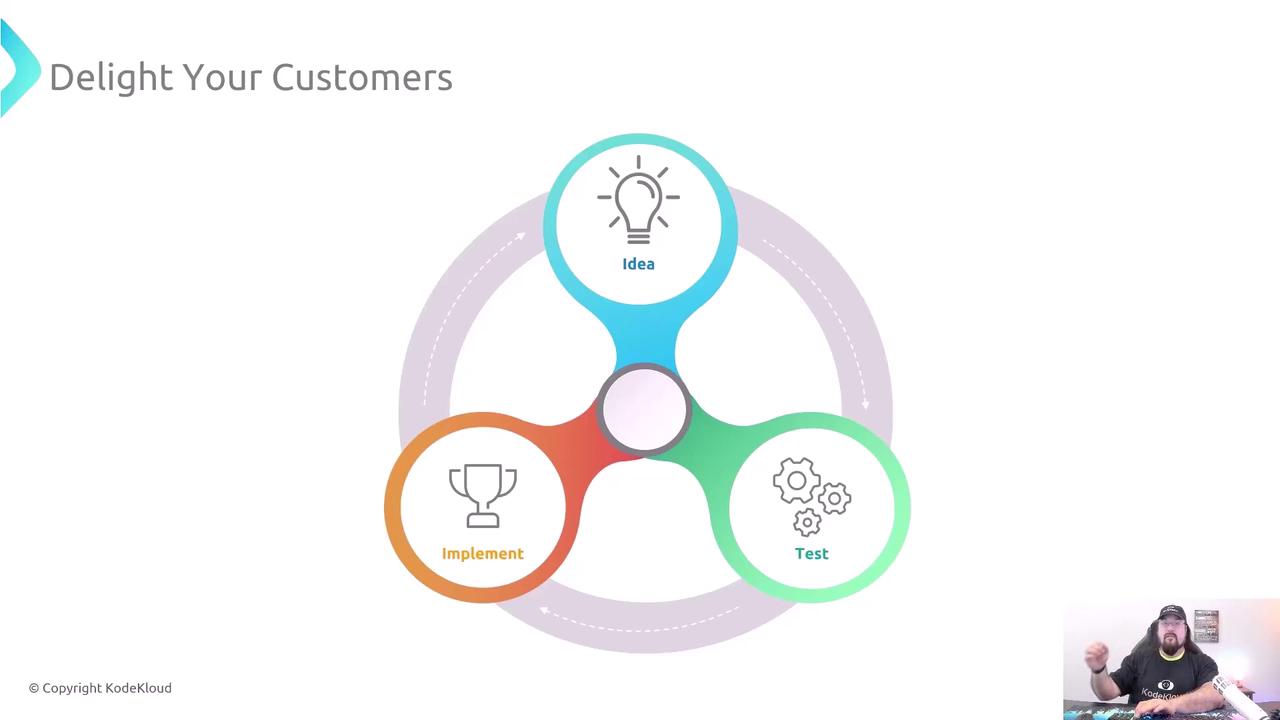
8. Summary of Best Practices
- Define internal vs external stakeholders clearly.
- Prioritize must-haves without neglecting system health.
- Communicate regularly, concisely, and listen actively.
- Align vision, mission, strategy, and team goals.
- Foster innovation with rapid feedback loops.
!!! note "Key Takeaway" Balancing stakeholder needs and maintaining continuous improvement are the cornerstones of successful DevOps cultures.
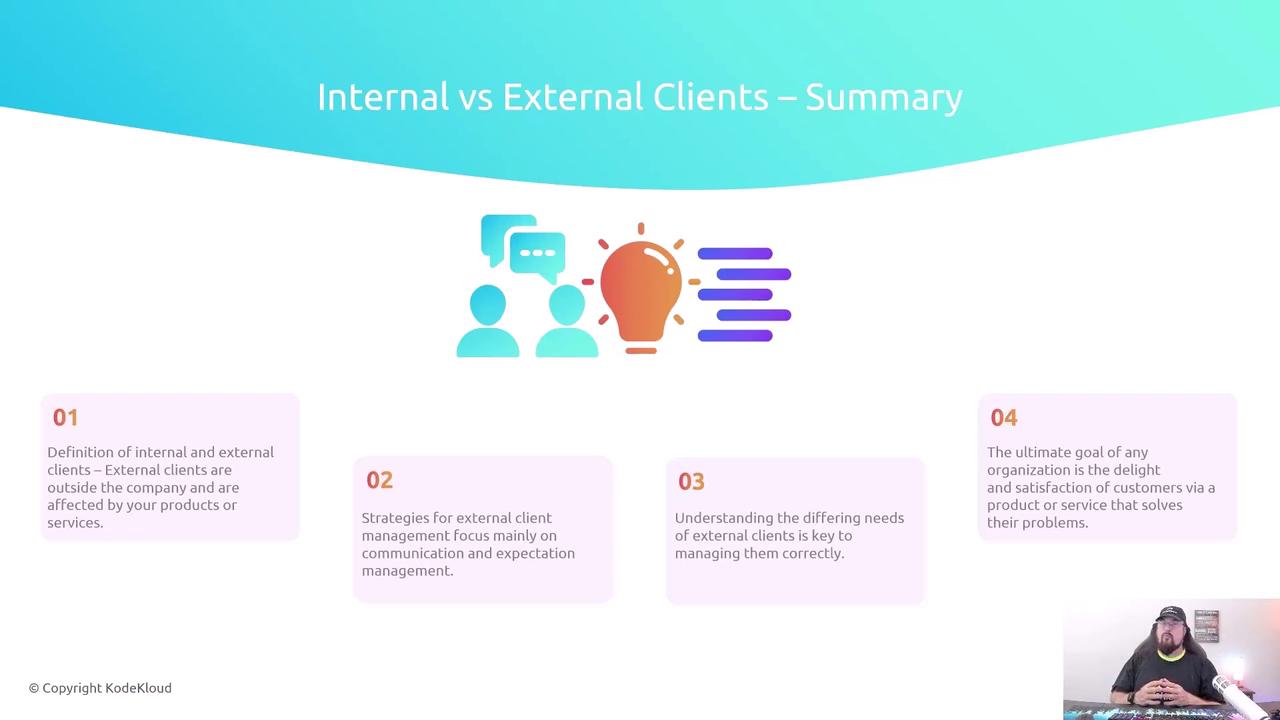
Further Reading
Links and References
Watch Video
Watch video content